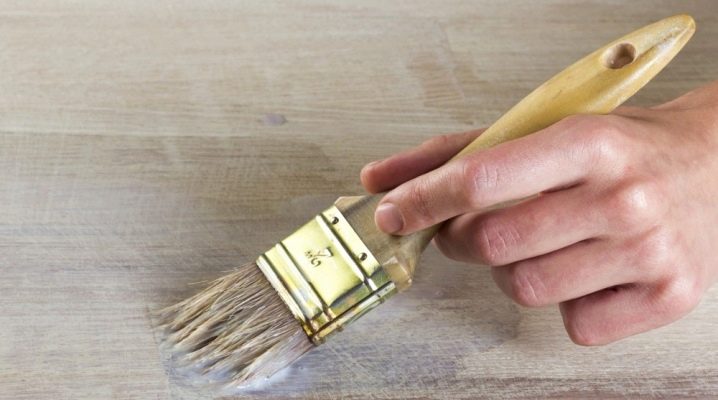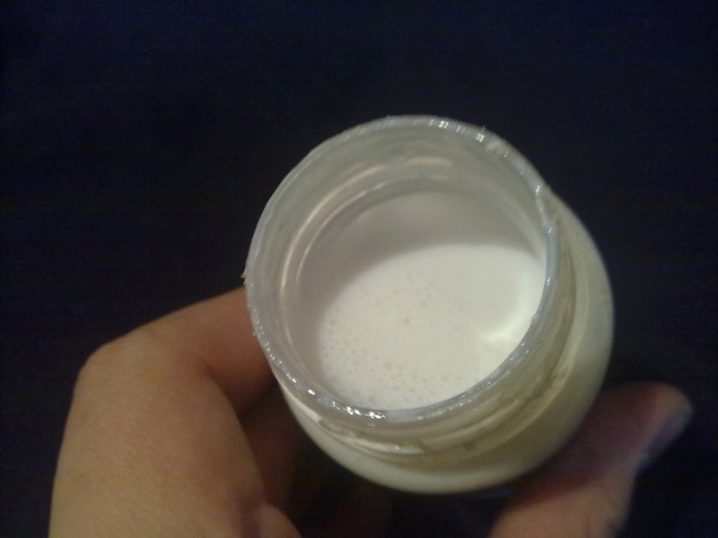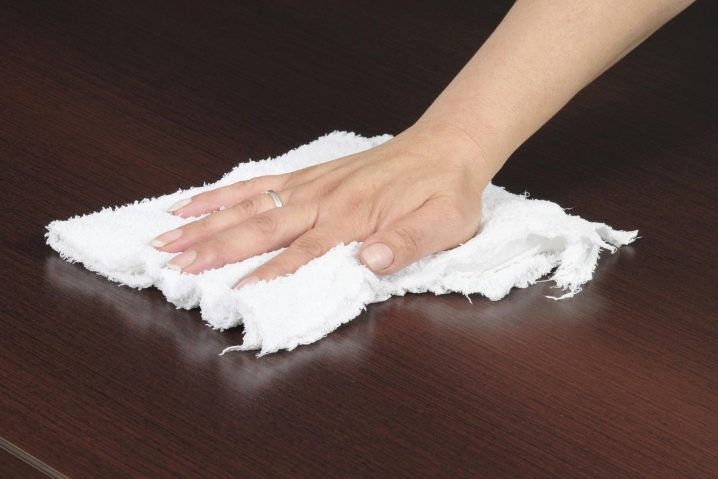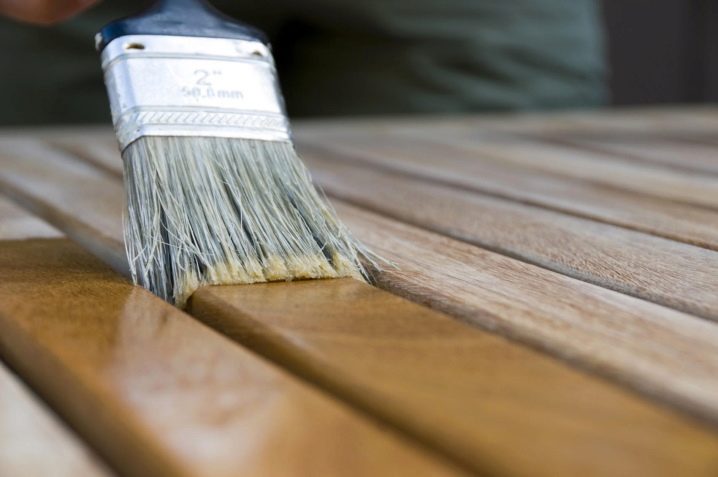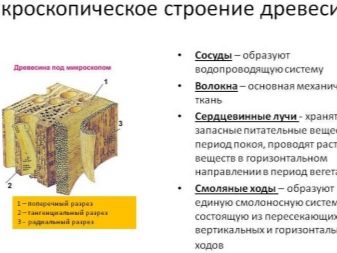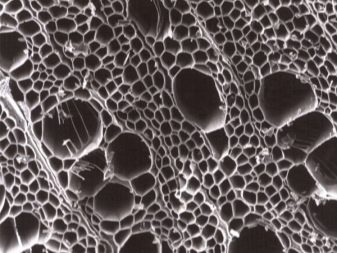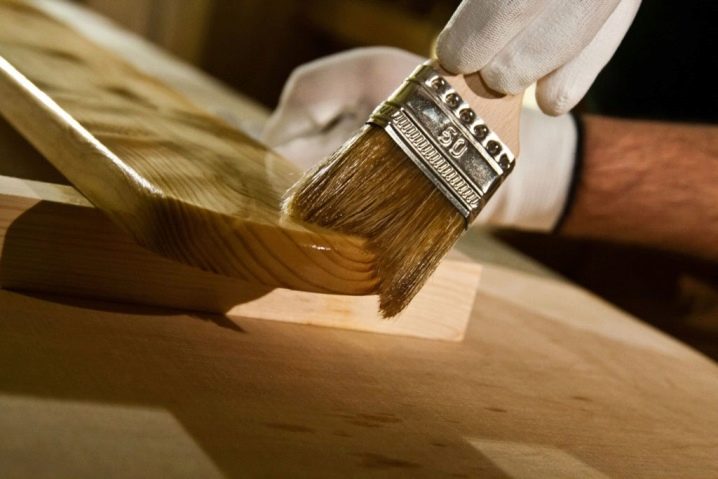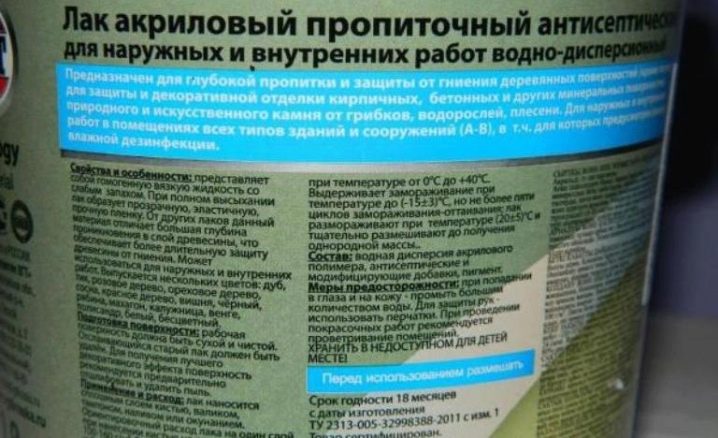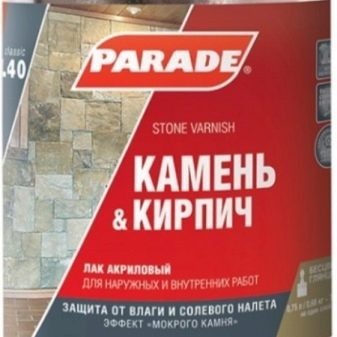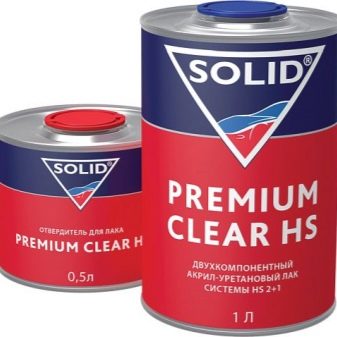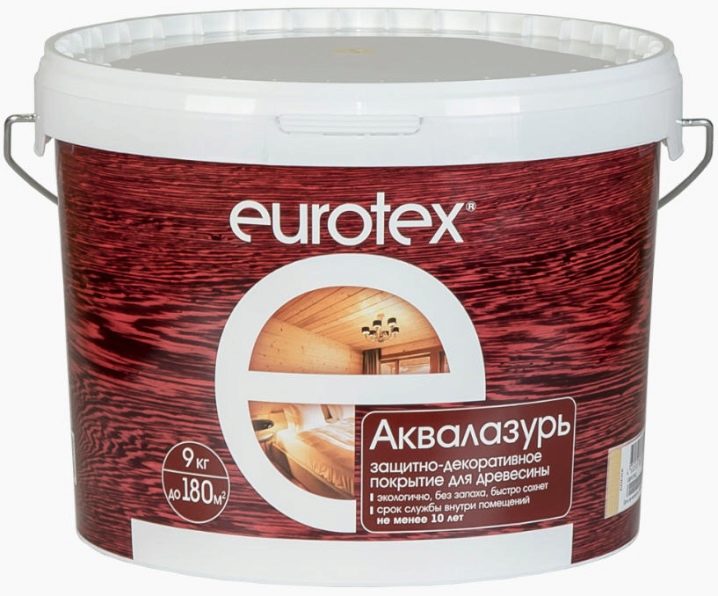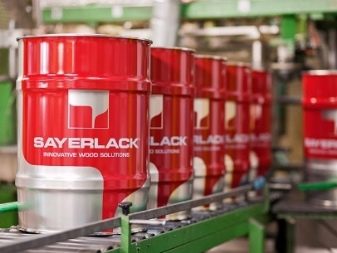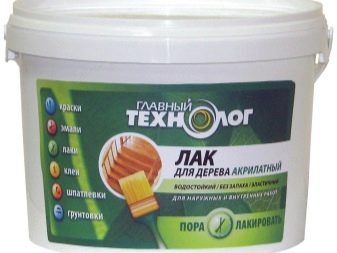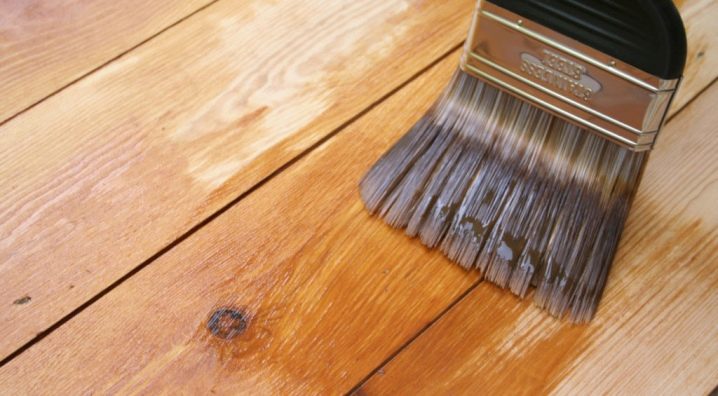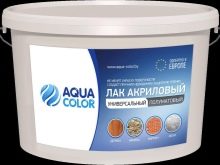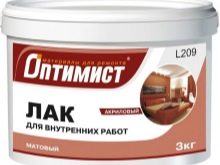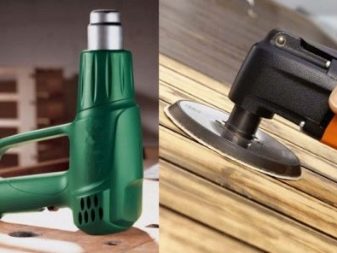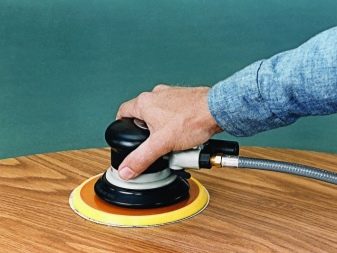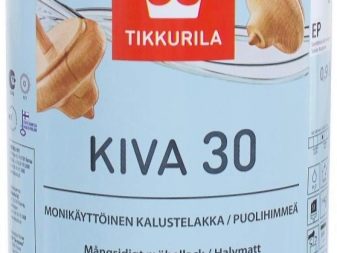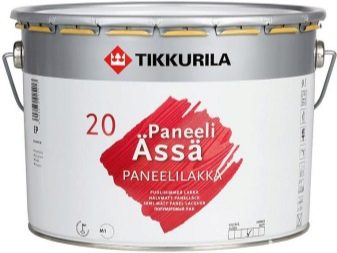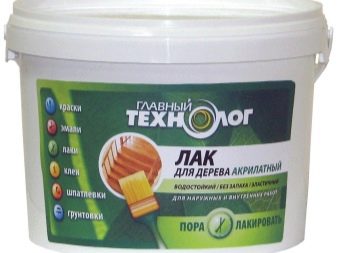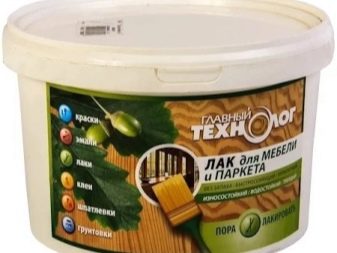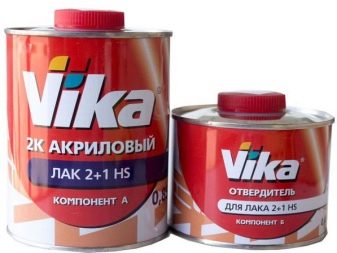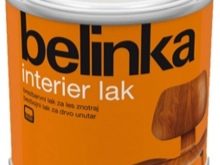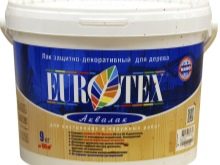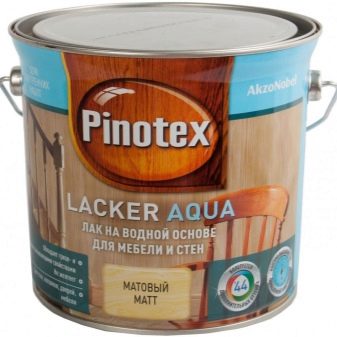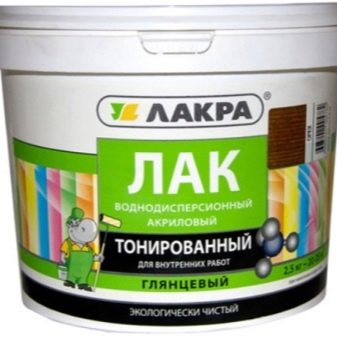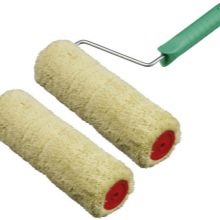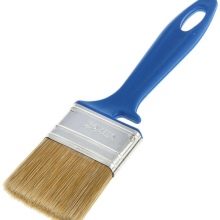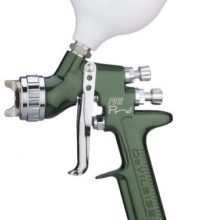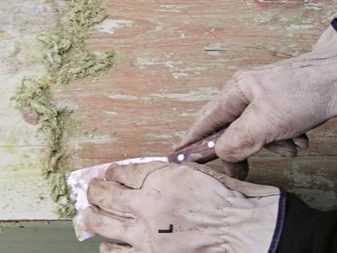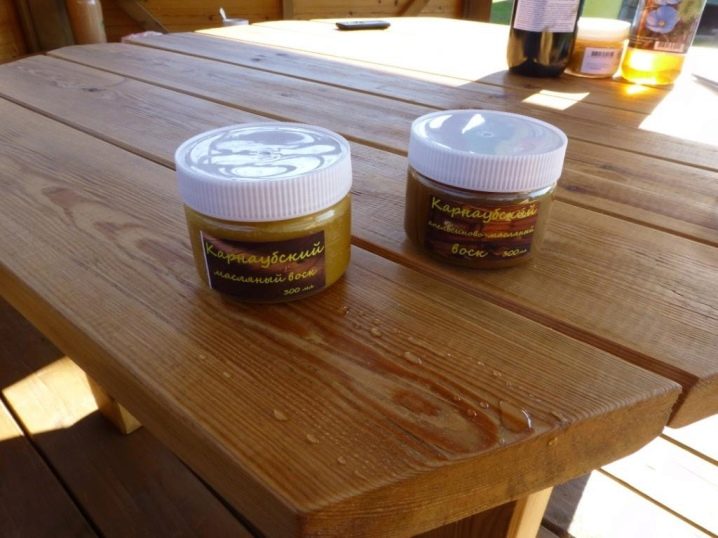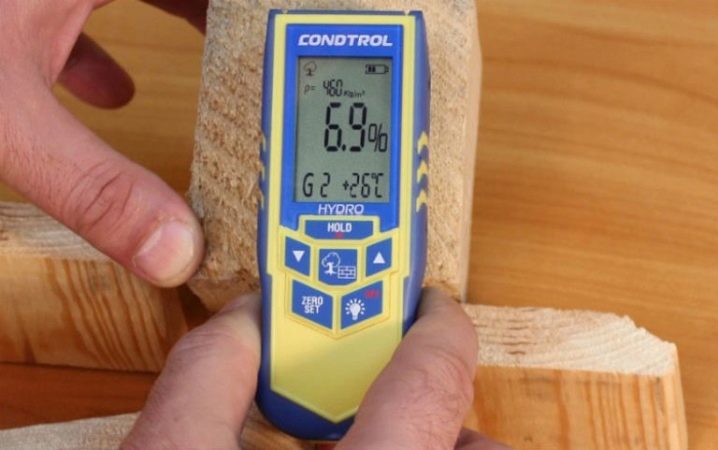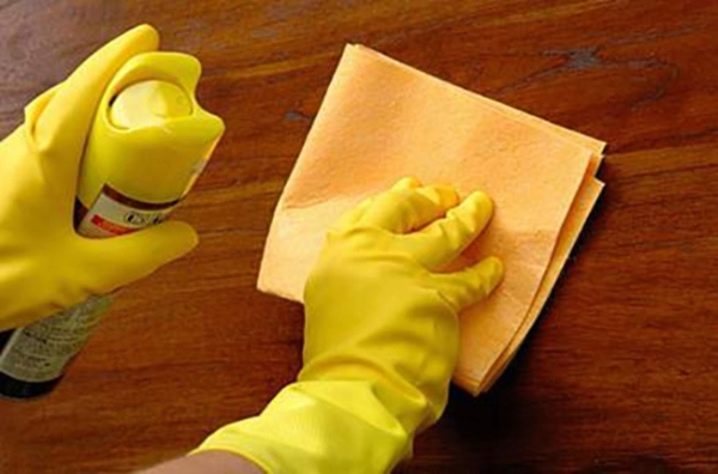Acrylic varnish for wood: types and uses
Acrylic wood varnish is often used for interior work. Its inconvenience for external use is due to the specificity of the composition, however, types for exterior decoration still exist. You should consider the scope of use and features of this varnish in more detail.
Special features
Acrylic lacquer contains dispersive and other substances that allow not only to treat the tree with a uniform layer, but also to protect it from certain harmful effects. This refers not only to the consequences of the vital activity of microorganisms, but also to various climatic influences: increased dryness or humidity, for example. By itself, this varnish has a thick cream texture, but it is more viscous. Classic color - gentle milky.
The tool has many advantages, including the following.
- Security. There are no toxic elements in the composition of acrylic varnishes. Some of them can even paint the dishes.
- Durability. Quality varnishes do not wear off much over time, reliably protecting wooden surfaces for many years.
- Ecological purity. Not to say that all the elements included in the varnish, were natural, but it decomposes and does not harm the environment.
- Practical convenience. It is easy to look after varnish surfaces, especially if they differ in the increased strength characteristics.
- High functionality. Varnishes are used to perform various coatings on wood, starting with painting the elements of dishes and ending with the treatment of terraces and gazebos.
- Aesthetic appeal. The tree, covered with acrylic paints, looks presentable. The color and texture of its deepen, the texture appears more clearly
- Ergonomic. This refers to the achievement of optimal performance with low material consumption. For example, having put only two layers, it is possible to be limited only to them as the tree will already look good
- High elasticity. While hardening, the lacquer forms a protective film, which can no longer be removed.
- High strength characteristics. Even with a high level of load, the lacquer coating will never be completely erased.
- High adhesive properties. The varnish has a good adhesion to the original surface, as a result of which such high strength is achieved.
- Unnoticeable smell. Many consumers note the presence of a faint smell, similar to the one that publishes ordinary gouache. Epoxy and other paints and varnishes cannot be compared.
- Short period of timerequired for setting and drying. As a rule, the application of varnish in several layers can be carried out in one light day.
- Resistance to the activity of microorganisms. Acrylic varnishes clog the surface of the tree, preventing the spores of plants or bacteria from penetrating to it.
- Resistance to adverse climatic events. This refers to the microclimate of the room. For example, lacquer material is able to protect a tree from cracking in a room with dry, warm air.
- Affordable cost. The price of acrylic paints can not be called excessively high, rather, it is at an average level.
- Ease of work. Several tools are suitable for application: varnish is not very capricious in this regard.
In addition to the advantages, it has material and some disadvantages.
- The need for special temperature and climate conditions during application. Do not apply varnish if the temperature is at a mark below +5 degrees or above +30 degrees. The technology will be broken, and the paintwork will not be guaranteed durable. Also need to avoid drafts.
- The need for special storage. It is impossible to freeze or even cool the material, to expose it to sunlight.
Kinds
Initially, all acrylic lacquers are divided into two large groups: one-component and two-component. In single component versions, only acrylic is contained; two-component characterized by the presence of polyurethane.
It is worth noting that two-component varnishes guarantee higher strengththerefore, they are most often chosen for external works.
The most popular are water-based acrylic lacquers.They are increasingly replacing the usual varnishes to cover furniture. Acrylic akvalak became so popular, because compared to other means, also having a water base (alkyd, for example), they are cheaper.
The reverse side of the coin - strength characteristics. They can not be called elevated. As a consequence, these varnishes are not used outdoors. They are suitable only for painting the floor and furniture, it is important to comply with all requirements regarding the working conditions with paintwork material indicated on the package. Usually refers to temperature and humidity.
Two-component acryl-polyurethane varieties, despite the almost similar price, have higher strength properties than their single-component equivalent. However, you should not apply this type outside the room: it is not suitable for outdoor work.
Acrylic lacquers, also related to acrylic, have a somewhat extended range of application. So, with their help, you can not only tint and give a glossy shine to clean wooden surfaces, but also apply them to already painted elements. It is important to keep one thing in mind here.The paint used for dyeing must also be water-dispersive, otherwise the varnish will not grasp properly.
There are few types of acrylic varnishes, but each of them is universal. If necessary, you can use each of them for outdoor decoration, but only if you live in a temperate climate zone without extreme weather conditions. Otherwise, the paintwork material will not stand and simply cracks, losing the lion's share of its operational properties.
Colors
Initially, acrylic varnish for wood is produced in a milky-white color, but upon drying it forms a colorless film that only emphasizes the texture of the wood, without giving it any special shade. A transparent film only adds shine, due to which the original tone of wood seems deeper and richer.
In recent years, new technologies of production and tinting, which have significantly expanded the color range of varnishes. Now you can easily get a tinted acrylic sample, which can successfully replace the stain. So you can solve two problems at once, without resorting to complex procedures: give the boards the desired color and protect them.
According to the gloss level, five degrees are distinguished, each of which is characterized by how much light is reflected in percentage by a surface coated with such a varnish:
- high glossy - more than 90%;
- glossy - 80-90%;
- semi-glossy - 40-50%;
- semi-matt - 10-15%;
- Matt - less than 10%.
When choosing, it is worth bearing in mind the features of brilliant coatings. On glossy surfaces, all the flaws stand out. Moreover, it is more often used for decoration of modern interiors in high-tech, futurism and similar styles. The opaque varnish, on the contrary, allows partially to hide flaws, and the surface turns velvety. This effect is necessary when creating an atmosphere of comfort, for example, as the style of Provence, country and others.
Choosing a varnish, decide what effect you want to achieve in the end. You may need to simply emphasize the beauty of the tree or slightly change its shade, give the wood a shine or pearl shine. Remember that if you do not like how you lay down one or another varnish, you can partially dismantle the acrylic film, “walking” on the surface of the grinder with a special grinding disc.However, care must be taken to ensure that the removal was the same throughout the area.
Famous manufacturers and reviews
Currently, several companies hold leading positions in the quality of the produced varnish. Among them - Russian, Finnish, Slovenian manufacturers. Below is a list of those about which users gave only positive feedback.
Tikkurila
Finnish production impresses not only with its excellent quality, but also with its price. It is 3-4 times higher than other similar products from other brands. However, acrylic paints are the safest and safest of all.
"Chief Technologist"
This acrylic-based latex lacquer is designed to emphasize the texture and color of wood, and at the same time protect it from negative environmental factors. There are also toning variants of unusual shades, for example, “Lemon” or “Spruce Greens”. Drevolak. Wax is added to products of this brand, as a result of which the fat content of the composition and, consequently, its protective properties increase. It is better to use Drevolak for interior work, outside it will be required to be applied in 3-4 layers.
Vika
The company is engaged in the production of two-component paints and varnishes, which have a high hardening rate, as well as enhanced strength characteristics, especially if enamel is applied under the lacquer layer.
VGT
Such varnishes should not be used to treat floors. Initially, the composition has a milky-white color, but upon drying it becomes completely transparent, so that its presence practically does not affect the original shade of wood.
Belinka
This Slovenian company offers some of the best acrylic lacquers. Their safety for both humans and ecology is confirmed by many certificates.
Kudo
Produces varnishes in convenient sprayers. There are shading products, and this means that tinting is not needed - you can choose the desired shade from a wide range of colors.
Evrotex
This acrylic sample belongs to the aqualac and is more like an impregnation than a varnish in the classic sense. It reliably protects wood from negative influences, microorganisms and attrition.
Pinotex
The safest of all the products that can be used to cover wooden utensils.These varnishes cannot be used for exterior works, since they play a more decorative role.
Lacra
Offers excellent varnishes that perfectly protect against negative influences. Suitable for both indoor and outdoor use. The quality of goods at the highest level.
Selection and application
Acrylic varnish is applied in several layers.
For drawing it is possible to use several tools:
- Roller with a pile length up to 5 mm. Guarantees fast staining.
- Brush. Work is more laborious, but there is an opportunity to decorate all hard-to-reach places.
- Spray gun or sprayer. The most convenient and economical method of application. Allows you to apply a uniform layer, including in hard-to-reach places.
The choice of material is half the success. Make no mistake. So, if you plan to cover, for example, a chest of drawers with an abundance of carved parts, then it is best to give preference to the spray gun. For smooth wooden floors and fit roller.
Before starting work you need to do the preparation. The surface must be cleaned, in some cases, you will need a primer.If possible, refuse to purchase an acrylic sample, which is superimposed on the primer. Then the original texture of the tree will be pronounced.
Not only what varnish is able to guarantee a protective coating after one layer, so they are applied at least two. To make the coating even, you need the first layer after it dries out, a little polishing. After cleaning the surface, you can apply a second layer.
After all the work on the application of the lacquer layer is finished and the coating is dry, you can proceed to finishing. Keep in mind that acrylic varnish dries completely in two days. To this end, it is best to use parquet care products or wood wax. Such procedures will save the lacquer coating from rapid deterioration, because it will pick up the final performance characteristics only after two weeks.
Tips
Professionals of the finishing business share some recommendations regarding the choice of acrylic varnish, its use, operation and storage.
- It so happens that the varnish thickens with time, and it needs to be diluted.In no case should solvents or other chemicals be used. Only clean water will do.
- When diluting, you need to remember the proportions. If you add more than a tenth of the water in the composition, it will lead to the loss of properties and the rapid deterioration of the tree after processing.
- Before you use paintwork material, it must be carefully mixed in order to eliminate the possibility of stains and color spots on the surface.
- Before processing it is necessary to check the moisture content of the wood. Ideally, it should be well dried, but it is acceptable to varnish the boards if their humidity does not exceed 50%.
- Thoroughly degrease the surface. In places with greasy stains, the lacquer simply does not mate with the surface, and this will lead to defects. Moreover, when applying a substance of a milky color to such places, its color will not disappear, but remain the same, which will be very noticeable.
- Follow the instructions. It will probably be said there that it is not necessary to make one thick layer of material. It is best to impose a pair of thin.
On the intricacies of applying acrylic lacquer on wood is described in detail in the video.
